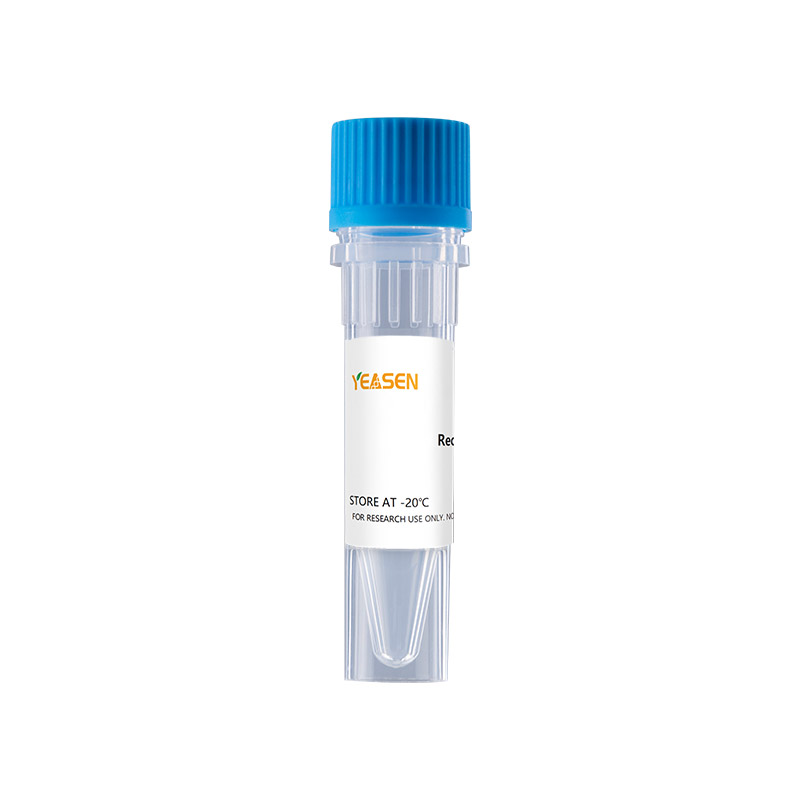

產(chǎn)品說明書
FAQ
COA
已發(fā)表文獻(xiàn)
IL-13 is a immunoregulatory cytokine that plays a key role in the pathogenesis of allergic asthma and atopy. It is secreted by Th1 and Th2 CD4+ T cells, NK cells, visceral smooth muscle cells, eosinophils, mast cells, and basophils. IL-13 circulates as a monomer with two internal disulfide bonds that contribute to a bundled four alpha -helix configuration. Mature rat IL-13 shares 59%, 75%, and 60% amino acid sequence identity with human, mouse, and rhesus IL-13, respectively. Despite the low homology, it exhibits cross-species activity between human, mouse, and rat. IL-13 has diverse activities on numerous cell types. On macrophages, IL-13 suppresses the production of proinflammatory cytokines and other cytotoxic substances. On B cells, IL-13 induces immunoglobulin class switching to IgE, upregulates the expression of MHC class II, CD71, CD72, and CD23, and costimulates proliferation. IL-13 upregulates IL-6 while downregulating IL-1 and TNF-alpha production by fibroblasts and endothelial cells. IL-13 binds with low affinity to IL-13 R alpha 1, triggering IL-13 R alpha 1 association with IL-4 R alpha. This high affinity receptor complex also functions as the type 2 IL-4 receptor complex. Additionally, IL-13 binds with high affinity to IL-13 R alpha 2 which is expressed intracellularly, on the cell surface, and as a soluble molecule. IL-13 R alpha 2 regulates the bioavailability of both IL-13 and IL-4 and is overexpressed in glioma and several bronchial pathologies. Compared to wild type IL-13, the atopy-associated R110Q variant of IL-13 elicits increased responsiveness from eosinophils that express low levels of IL-13 R alpha 2.
Product Properties
|
Synonyms |
T-cell Activation Protein P600 |
|
Accession |
P42203 |
|
GeneID |
116553 |
|
Source |
E.coli-derived Rat IL-13, Pro22-His131, with an N-terminal Met. |
|
Molecular Weight |
Approximately 12.2 kDa. |
|
AA Sequence |
MPVRRSTSPP VALRELIEEL SNITQDQKTS LCNSSMVWSV DLTAGGFCAA LESLTNISSC NAIHRTQRIL NGLCNQKASD VASSPPDTKI EVAQFISKLL NYSKQLFRYG H |
|
Tag |
None |
|
Physical Appearance |
Sterile Filtered White lyophilized (freeze-dried) powder. |
|
Purity |
> 97% by SDS-PAGE and HPLC analyses. |
|
Biological Activity |
The ED50 as determined by a cell proliferation assay using human TF-1 cells is less than 4 ng/ml, corresponding to a specific activity of > 2.5 × 105 IU/mg. Fully biologically active when compared to standard. |
|
Endotoxin |
< 1.0 EU per 1μg of the protein by the LAL method. |
|
Formulation |
Lyophilized from a 0.2 µm filtered concentrated solution in PBS, pH 7.4. |
|
Reconstitution |
We recommend that this vial be briefly centrifuged prior to opening to bring the contents to the bottom. Reconstitute in sterile distilled water or aqueous buffer containing 0.1% BSA to a concentration of 0.1-1.0 mg/mL. Stock solutions should be apportioned into working aliquots and stored at ≤ -20°C. Further dilutions should be made in appropriate buffered solutions. |
Shipping and Storage
The products are shipped with ice pack and can be stored at -20℃ to -80℃ for 1 year.
Recommend to aliquot the protein into smaller quantities when first used and avoid repeated freeze-thaw cycles.
Cautions
1. Avoid repeated freeze-thaw cycles.
2. For your safety and health, please wear lab coats and disposable gloves for operation.
3. For research use only!
HB220425

